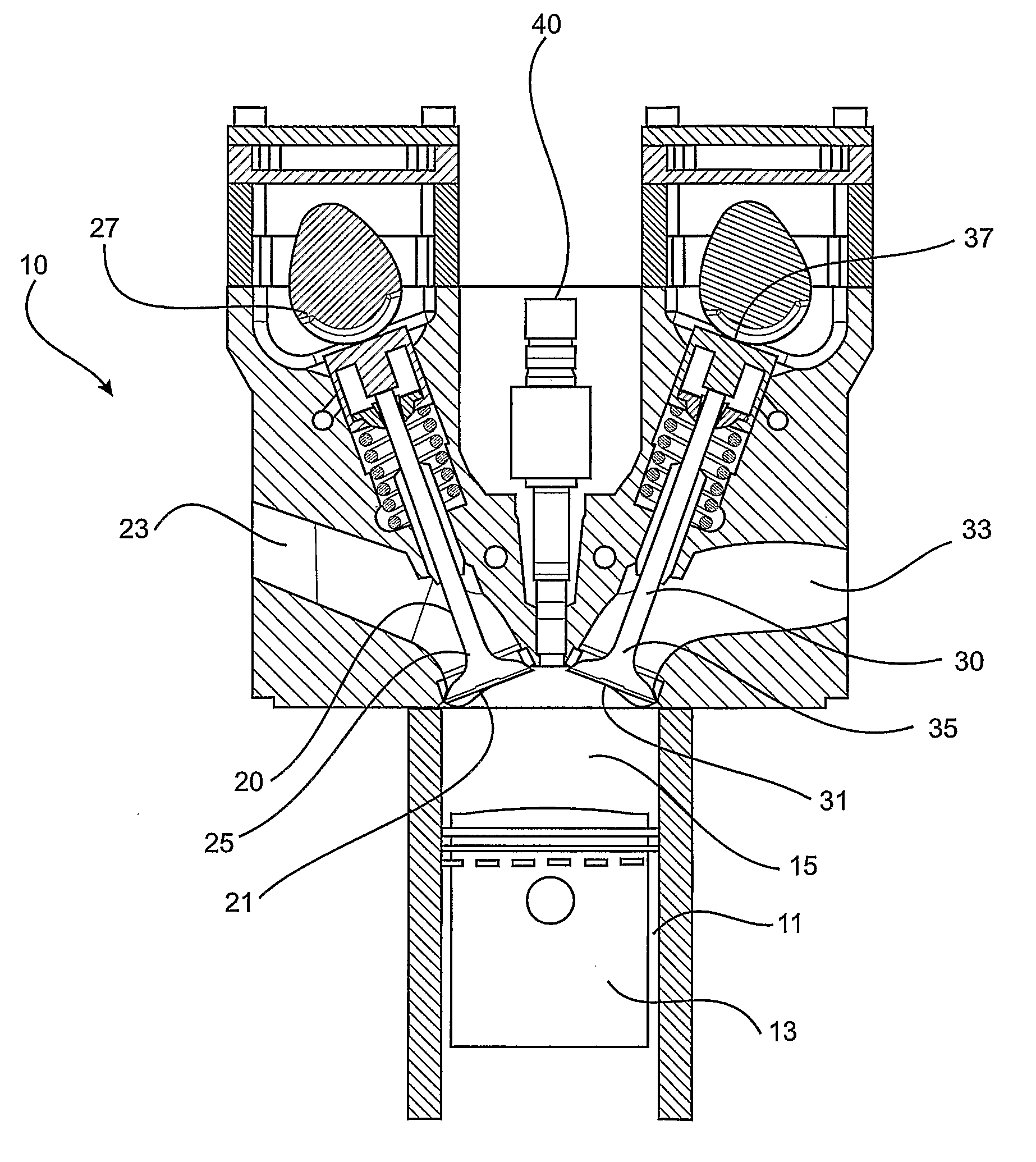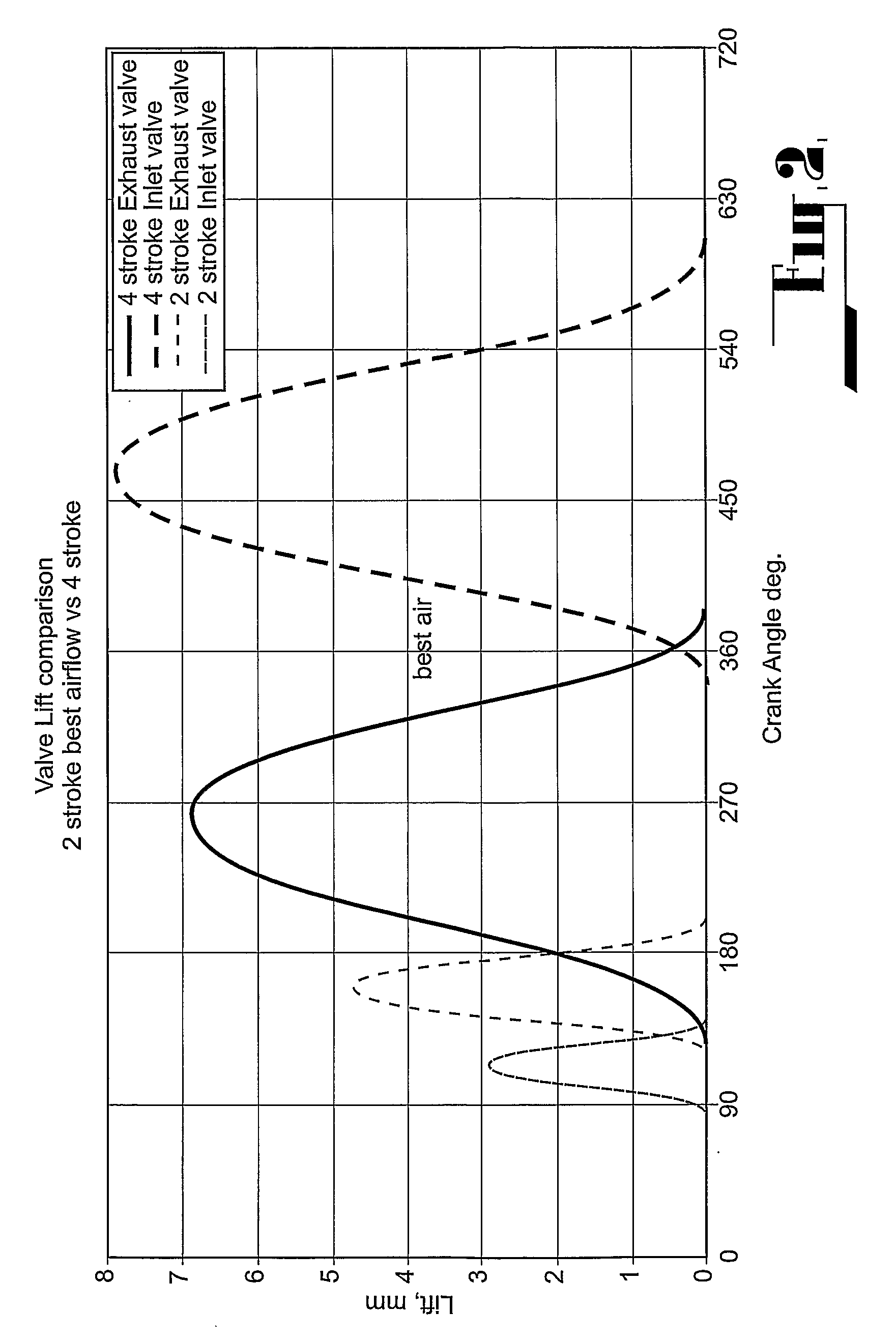Engine control strategy
a technology of engine control and control strategy, applied in the direction of engines, machines/engines, mechanical equipment, etc., can solve the problems of increasing the fuel consumption and emissions of unburned hydrocarbons, not successfully entering the market place, and reducing the efficiency of scavenging and volumetric efficiency, so as to minimise the short circuit of the intake charge, minimise the pumping loss, and reduce the effect of scalding and volumetric efficiency
- Summary
- Abstract
- Description
- Claims
- Application Information
AI Technical Summary
Benefits of technology
Problems solved by technology
Method used
Image
Examples
Embodiment Construction
[0050]The embodiment is directed to a reciprocating internal combustion engine 10 which is capable of operating in either two-stroke or four-stroke cycles of operation, with selective switching therebetween.
[0051]The engine 10 comprises a cylinder 11 and a piston 13 accommodated in the cylinder. The cylinder 11 and piston 13 cooperate to define a combustion chamber 15. The combustion chamber 15 undergoes volume expansion and contraction upon reciprocatory movement of the piston 13 within the cylinder 11 between top-dead-centre (TDC) and bottom-dead-centre (BDC) positions.
[0052]An inlet means 20 is provided for introducing an air charge into the combustion chamber and an outlet means 30 is provided for discharging exhaust gas fro in the combustion chamber.
[0053]The inlet means 20 comprises an inlet port 21 opening onto the combustion chamber 15 at the terminal end of a delivery duct 23, and an inlet valve 25 for opening and closing the inlet port 21. A control means 27 is provided fo...
PUM
 Login to View More
Login to View More Abstract
Description
Claims
Application Information
 Login to View More
Login to View More - R&D
- Intellectual Property
- Life Sciences
- Materials
- Tech Scout
- Unparalleled Data Quality
- Higher Quality Content
- 60% Fewer Hallucinations
Browse by: Latest US Patents, China's latest patents, Technical Efficacy Thesaurus, Application Domain, Technology Topic, Popular Technical Reports.
© 2025 PatSnap. All rights reserved.Legal|Privacy policy|Modern Slavery Act Transparency Statement|Sitemap|About US| Contact US: help@patsnap.com



